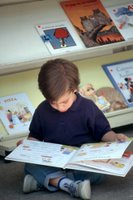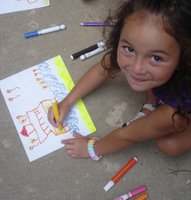Interactive Art at the National Gallery of Art
I played around with PHOTO OP (Shockwave, 7 MB) over at the Kids Zone at the National Gallery of Art.
The site says it's a
two-part interactive activity that introduces you to digital photography and digital photo editing. Use the virtual camera to create snapshots and explore lighting, focus, shutter speed, and compositional effects. After you've taken some photos, switch to the Photo Op editor and transform your pictures into something completely different.I'm just at the "young children" stage (as usual), but I had fun and can see how kids can learn everything from perspective (ie., blurring the foreground to radically change the viewer's focus) to making a collage of the image and so on.
This Art Zone interactive is suitable for all ages. Young children will find it easy to take simple snapshots and transform or recolor their virtual photos.
More advanced users can create complex artistic compositions by layering, applying filters, and experimenting with various special effects, lighting, and blends.

categorieschildren's learning games kids sites educational fun homeschool
Labels: art, photography





